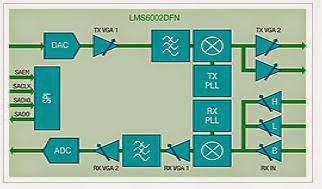Satellite TV, RX and positioning
Satellite TV, RX and positioning Playing with satellites TV or radio is not too hard or expensive. I did a fair bit on it a few years ago (C and K band, ~4 GHz and ~12 GHz) and still have some of the gear. I could see my house in Brisbane on Google maps from the big white C band dish, ex Sky. It was a heavy fixed dish, jerry-rigged with a linear-actuator for position control. A full new C (and usable on K) band system is around $400 on eBay. Sometimes they are available for free, migrants and expats used them to get overseas TV. I had one, disassembled, but tossed it when we moved to Gold Coast. Should/may have kept pole, as big steel is expensive. All satellite TV use a LNB (low noise block) to receive and down convert to a standard IF range of about 1 to 2 GHz for a TV set-top box. The coax is used to carry control signals as tones (diseqc) or DC. The coax is very high performance, but cheap because of the massive use of it. The big dishes are controlled...




